A typical dairy farm currently operating at the upper limit of the nitrates derogation stands to lose 37% in profit as a result of changes to the derogation, according to new analysis by ifac. The analysis looks at the impact of a typical dairy farm with 114 cows on 50ha and also rearing young stock.
The ifac analysis is based on a base milk price of 34c/l with average levels of milk production.
Total costs of production, excluding own labour, tax and debt repayments is 35c/l.
Within this, it is assumed that 1t of meal is fed per cow costing €380/t and fertiliser is costing €450/t.
The analysis looks at the impact for a farm currently at 247kg N/ha going to 220kg N/ha under a number of scenarios.
The first scenario looks at the impact of reducing cow numbers. In this scenario, cow numbers are reduced by 14 cows to 100 cows. Milk sales, stock sales and variable costs all reduce accordingly, while fixed costs stay the same.
The net result is that net profit reduces by over €20,500 to just over €35,600 – a 37% drop compared to the base scenario, assuming no change to milk yield per cow.
Two other alternative strategies were also examined; leasing land and contract rearing. Animal numbers could stay the same if land area was to increase by 6ha.
At a cost of €741/ha (€300/acre), the ifac analysis suggests that profitability would decrease by €6,640, a decline of 12% compared to the base scenario.
If 25 heifer calves and 25 in-calf heifers are contract reared elsewhere, cow numbers could actually increase by five cows to 119 cows and the farm would still be under the 220kg N/ha limit.
This would increase milk sales and variable costs due to the additional cost of contract rearing. In this scenario, farm profit would decrease by €8,212 or 15% compared to the base scenario.
The analysis shows that the reduction in profit as a result of the changes to the derogation is between 12% and 37% depending on what option is taken.
It’s important to note that the only option within the farmer’s control is to cull cows.
It is not within their gift to acquire additional land and to have that in place by next January. If land costs more than €300/acre, this will further reduce profitability.
According to Philip O’Connor, head of farm support with ifac, farmers who are currently above 220kg N/ha need to sit down and do the numbers for themselves;
“The question many farmers have is how do we maintain output if we end up having less cows. Is it by having better, more efficient cows, is it by feeding them better or is it by having more land or contract rearing heifers?
“The other question is how many of these options are actually available to farmers? Land is already scarce and now there will be another increase in demand. It’s also fair to say that cows are already very efficient so how can farmers make gains there without incurring additional feed costs? Plus, any improvement in farm performance is just going to replace lost profits as a result of the changes to the derogation,” he says.
Diarmaid Fitzgerald, Cratloe, Co Clare
Diarmaid Fitzgerald was the winner of the Grassland Farmer of the Year competition for 2022 and hosted an open day on his farm last Thursday.
Milking 145 cows on 66ha in one block, the young farmer is mid-way through development of the family farm and has aspirations of milking up to 180 cows, which would be a stocking rate of 2.72 cows/ha on the milking block.
The sustainability credentials on the farm are high, with 66% of the farm at high clover content
Given that the farm is growing over 14t of grass per hectare from 130kg N/ha, the sustainability credentials on the farm are high, with 66% of the farm at high clover contents.
As things stand, Diarmaid is still unsure if his farm will be affected by the derogation rules or not.
It is not clear from looking at the EPA map published in June if the farm is in the red area or the white area and Diarmaid doesn’t expect to know this until the end of September.

Diarmaid Fitzgerald from Cratloe in Co Clare won the Grassland Farmer of the Year award for 2022.
However, rightly or wrongly, he is planning on the basis that the farm will be at 220kg N/ha.
Currently, the one- to two-year-old heifers are contract-reared but Diarmaid says the calves will be contract reared now also.
By contract rearing and leasing in an additional 8ha, cow numbers could increase to 167 cows, which would be a stocking rate of 2.5 cows/ha on the milking platform and an overall stocking rate of less than 2.3 cows/ha which is less than 220kg N/ha.
Kevin
Flynn, Clonaslee, Co Laois
The Reary herd, owned by Kevin and Martina Flynn from Clonaslee in Co Laois, hosted an IHFA open day last Friday. The herd consists of 178 cows with an average 305-day milk recording production of 9,644kg of milk per cow at 3.95% fat and 3.46% protein, or 715kg MS/cow from 1.4t of meal per cow.
The herd is split calving, with 60% calving in the spring and the remainder in the autumn.

Kevin Flynn from Clonaslee in Co Laois hosted the Irish Holstein Friesian Association open day on his farm.
The EBI of the herd is €131, with €60 for milk and €32 for fertility. The calving interval is 372 days with an average of 3.9 lactations in the herd.
On the subject of nitrates, the herd is in the high band for nitrates and has an organic nitrogen figure of 228kg N/ha.
Each of these options comes with a costIn order to get back to 220kg, Kevin would need to reduce stock numbers by eight cows and followers, or export slurry or else take on more land.
Each of these options comes with a cost, either in terms of lost output if there are less cows on the farm or additional land leasing costs, which presumes that land is available to be leased.
The stark reality is that if he was to farm without a derogation and without exporting slurry or leasing more land, a total of 60 cows and followers would have to be culled.
A typical dairy farm currently operating at the upper limit of the nitrates derogation stands to lose 37% in profit as a result of changes to the derogation, according to new analysis by ifac. The analysis looks at the impact of a typical dairy farm with 114 cows on 50ha and also rearing young stock.
The ifac analysis is based on a base milk price of 34c/l with average levels of milk production.
Total costs of production, excluding own labour, tax and debt repayments is 35c/l.
Within this, it is assumed that 1t of meal is fed per cow costing €380/t and fertiliser is costing €450/t.
The analysis looks at the impact for a farm currently at 247kg N/ha going to 220kg N/ha under a number of scenarios.
The first scenario looks at the impact of reducing cow numbers. In this scenario, cow numbers are reduced by 14 cows to 100 cows. Milk sales, stock sales and variable costs all reduce accordingly, while fixed costs stay the same.
The net result is that net profit reduces by over €20,500 to just over €35,600 – a 37% drop compared to the base scenario, assuming no change to milk yield per cow.
Two other alternative strategies were also examined; leasing land and contract rearing. Animal numbers could stay the same if land area was to increase by 6ha.
At a cost of €741/ha (€300/acre), the ifac analysis suggests that profitability would decrease by €6,640, a decline of 12% compared to the base scenario.
If 25 heifer calves and 25 in-calf heifers are contract reared elsewhere, cow numbers could actually increase by five cows to 119 cows and the farm would still be under the 220kg N/ha limit.
This would increase milk sales and variable costs due to the additional cost of contract rearing. In this scenario, farm profit would decrease by €8,212 or 15% compared to the base scenario.
The analysis shows that the reduction in profit as a result of the changes to the derogation is between 12% and 37% depending on what option is taken.
It’s important to note that the only option within the farmer’s control is to cull cows.
It is not within their gift to acquire additional land and to have that in place by next January. If land costs more than €300/acre, this will further reduce profitability.
According to Philip O’Connor, head of farm support with ifac, farmers who are currently above 220kg N/ha need to sit down and do the numbers for themselves;
“The question many farmers have is how do we maintain output if we end up having less cows. Is it by having better, more efficient cows, is it by feeding them better or is it by having more land or contract rearing heifers?
“The other question is how many of these options are actually available to farmers? Land is already scarce and now there will be another increase in demand. It’s also fair to say that cows are already very efficient so how can farmers make gains there without incurring additional feed costs? Plus, any improvement in farm performance is just going to replace lost profits as a result of the changes to the derogation,” he says.
Diarmaid Fitzgerald, Cratloe, Co Clare
Diarmaid Fitzgerald was the winner of the Grassland Farmer of the Year competition for 2022 and hosted an open day on his farm last Thursday.
Milking 145 cows on 66ha in one block, the young farmer is mid-way through development of the family farm and has aspirations of milking up to 180 cows, which would be a stocking rate of 2.72 cows/ha on the milking block.
The sustainability credentials on the farm are high, with 66% of the farm at high clover content
Given that the farm is growing over 14t of grass per hectare from 130kg N/ha, the sustainability credentials on the farm are high, with 66% of the farm at high clover contents.
As things stand, Diarmaid is still unsure if his farm will be affected by the derogation rules or not.
It is not clear from looking at the EPA map published in June if the farm is in the red area or the white area and Diarmaid doesn’t expect to know this until the end of September.

Diarmaid Fitzgerald from Cratloe in Co Clare won the Grassland Farmer of the Year award for 2022.
However, rightly or wrongly, he is planning on the basis that the farm will be at 220kg N/ha.
Currently, the one- to two-year-old heifers are contract-reared but Diarmaid says the calves will be contract reared now also.
By contract rearing and leasing in an additional 8ha, cow numbers could increase to 167 cows, which would be a stocking rate of 2.5 cows/ha on the milking platform and an overall stocking rate of less than 2.3 cows/ha which is less than 220kg N/ha.
Kevin
Flynn, Clonaslee, Co Laois
The Reary herd, owned by Kevin and Martina Flynn from Clonaslee in Co Laois, hosted an IHFA open day last Friday. The herd consists of 178 cows with an average 305-day milk recording production of 9,644kg of milk per cow at 3.95% fat and 3.46% protein, or 715kg MS/cow from 1.4t of meal per cow.
The herd is split calving, with 60% calving in the spring and the remainder in the autumn.

Kevin Flynn from Clonaslee in Co Laois hosted the Irish Holstein Friesian Association open day on his farm.
The EBI of the herd is €131, with €60 for milk and €32 for fertility. The calving interval is 372 days with an average of 3.9 lactations in the herd.
On the subject of nitrates, the herd is in the high band for nitrates and has an organic nitrogen figure of 228kg N/ha.
Each of these options comes with a costIn order to get back to 220kg, Kevin would need to reduce stock numbers by eight cows and followers, or export slurry or else take on more land.
Each of these options comes with a cost, either in terms of lost output if there are less cows on the farm or additional land leasing costs, which presumes that land is available to be leased.
The stark reality is that if he was to farm without a derogation and without exporting slurry or leasing more land, a total of 60 cows and followers would have to be culled.






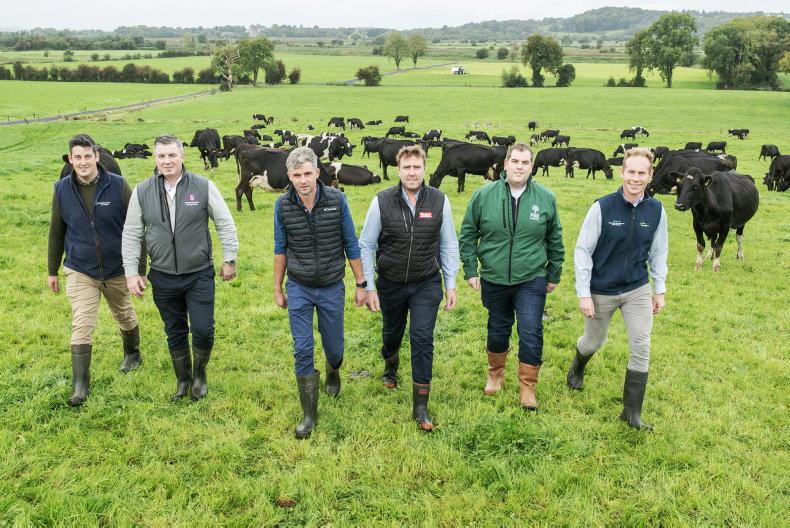
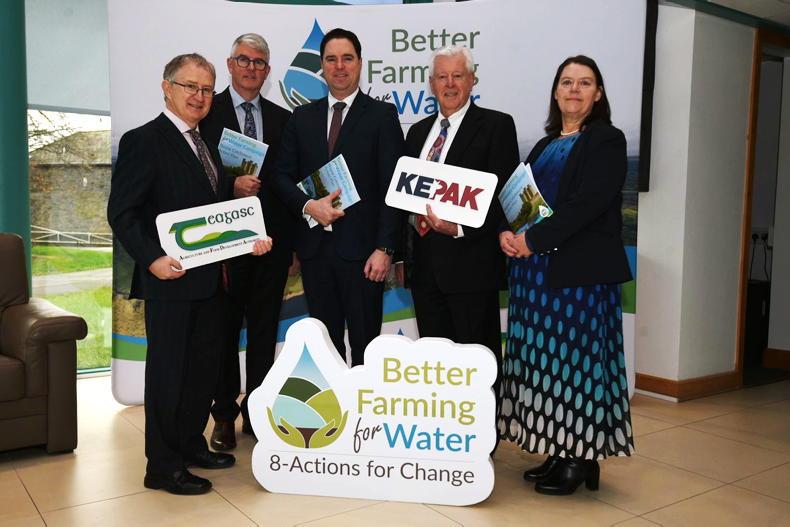
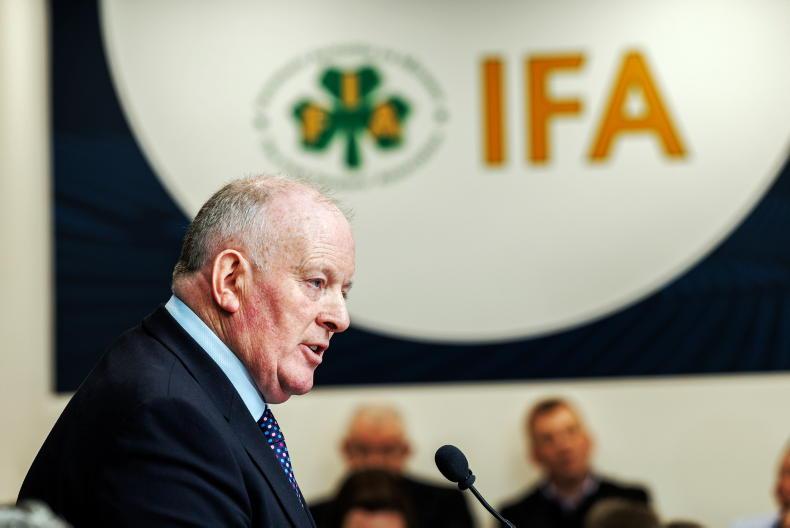
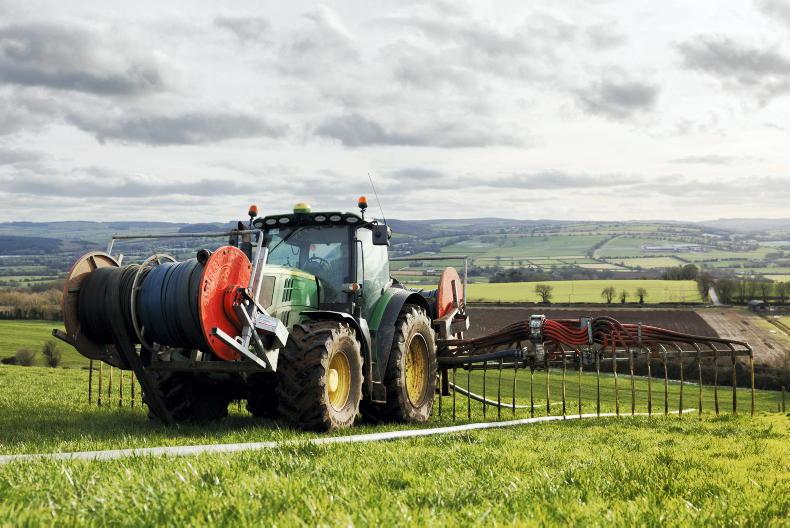
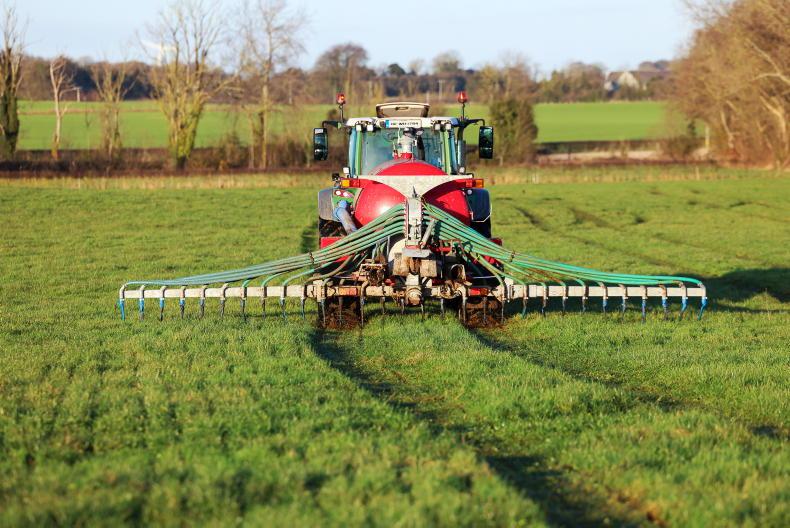
SHARING OPTIONS